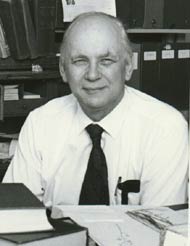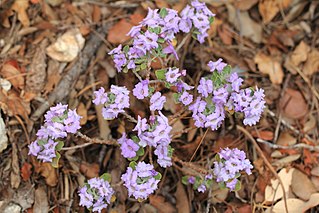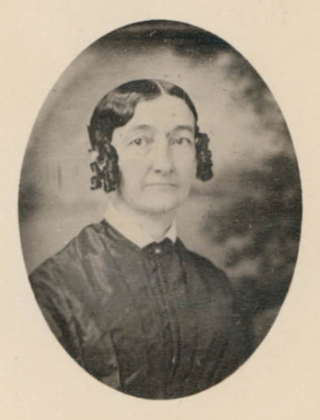
Ynés Enriquetta Julietta Mexía was a Mexican-American botanist notable for her extensive collection of novel specimens of flora and plants originating from sites in Colombia, Mexico, and Peru. She discovered a new genus of Asteraceae, known after her as Mexianthus, and accumulated over 150,000 specimens for botanical study over the course of a career spanning 16 years enduring challenges in the field that included poisonous berries, dangerous terrain, bogs and earthquakes for the sake of her research.

Arthur John Cronquist was an American biologist, botanist and a specialist on Compositae. He is considered one of the most influential botanists of the 20th century, largely due to his formulation of the Cronquist system as well as being the primary co-author to the Flora of the Pacific Northwest, still the most up to date flora for three northwest U.S. States to date. Two plant genera in the aster family have been named in his honor. These are Cronquistia, a possible synonym of Carphochaete, and Cronquistianthus, which is sometimes included as a group within Eupatorium. The former was applied by R.M. King and the latter by him and Harold E. Robinson.
Martín Sessé y Lacasta was a Spanish botanist, who relocated to New Spain during the 18th century to study and classify the flora of the territory. The standard author abbreviation Sessé is used to indicate this person as the author when citing a botanical name.

Edward Lee Greene was an American botanist known for his numerous publications including the two-part Landmarks of Botanical History and the describing of over 4,400 species of plants in the American West.

Rogers McVaugh was a research professor of botany and the UNC Herbarium's curator of Mexican plants. He was also Adjunct Research Scientist of the Hunt Institute in Carnegie Mellon University and a Professor Emeritus of botany in the University of Michigan, Ann Arbor.
Fleischmanniopsis is a genus of Mesoamerican flowering plants in the family Asteraceae.

Rachel Littler Bodley was an American professor, botanist, and university leader. She was best known for her term as Dean of the Woman's Medical College of Pennsylvania (1874–1888). She helped found the American Chemical Society in New York City.

John William Harshberger, was an American botanist who specialized in plant geography, ecology and plant pathology. He taught at the University of Pennsylvania for more than 35 years. He was an ardent plant conservationist and he is credited with coining the term "ethnobotany".
George Hill Mathewson Lawrence was an American botanist, writer and professor of botany who helped establish the 'Liberty Hyde Bailey Hortorium', the Hunt Botanical Library and the Huntia journal. He was also an avid book collector, including books on the history of Rhode Island, historic books and botanical art.
Ida Augusta Keller was an American plant physiologist and teacher in Philadelphia.

Emily Lovira Gregory (1840–1897) was an American botanist born in Portage, New York. She began her educational career by receiving her Bachelor's of Arts from Cornell University in 1881, later earning a Ph.D. at the University of Zurich. This made her one of the first American women to earn a doctoral degree from a university in Europe. Gregory often found it difficult to find paid academic positions. She often would take on the unpaid positions because she could support herself. From 1890 to 1895 at the University of Pennsylvania and Barnard College she worked as a teaching fellow and lecturer respectively. Gregory was the first woman elected to the American Society of Naturalists in 1886.
Mildred Esther Mathias was an American botanist and professor.
Bassett Maguire was an American botanist, head curator of the New York Botanical Garden, and a leader of scientific expeditions to the Guyana Highlands in Brazil and Venezuela.
Anton Karl Schindler was a German dentist and botanist.

Leucophyllum langmaniae is a shrub native of Mexico, semi-evergreen, with gray-green leaves of velvety texture. Its shape is branched and compact, forming a rounded mass of up to 1 m high and wide. The flowers are lavender. They appear in the fall, and are even more abundant if drought or heat waves were important.

Lopezia is a genus of plants of the family Onagraceae, largely restricted to Mexico and Central America.
Susan Adams Delano McKelvey (1883–1964) was an American botanist and writer, noted for her work at the Arnold Arboretum. The standard author abbreviation McKelvey is used to indicate this person as the author when citing a botanical name.

Ann Fowler Rhoads is an American botanist who worked as a plant pathologist at Morris Arboretum for 36 years, retiring in 2013. She is the co-founder of the Pennsylvania Flora Project of Morris Arboretum. In addition, Rhoads is a former Adjunct Professor at the University of Pennsylvania and a former Research Associate at the Academy of Natural Sciences.
The Hunt Institute for Botanical Documentation (HIBD), dedicated as the Rachel McMasters Miller Hunt Botanical Library in 1961, is a research division of Carnegie Mellon University.

Abigail Kimber was an American botanist, botanical collector, social reformer, abolitionist, and women’s rights activist.










